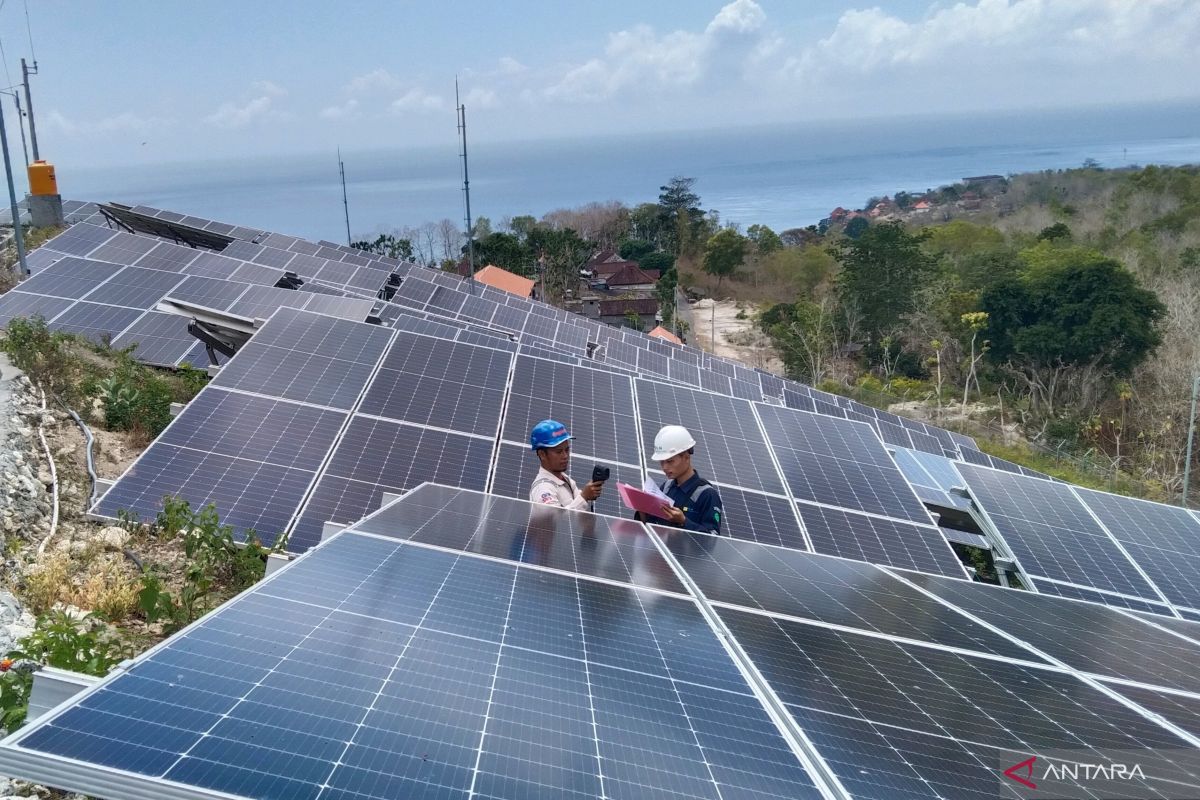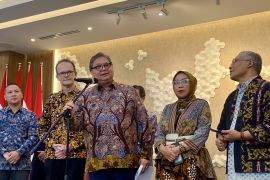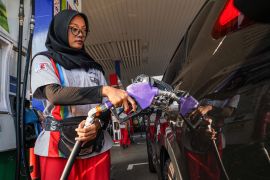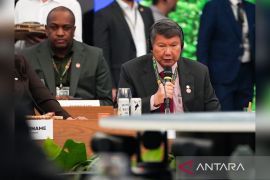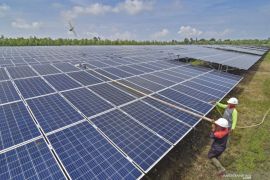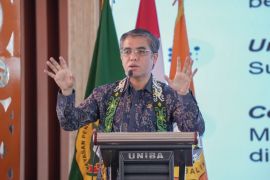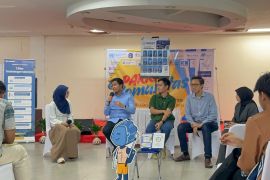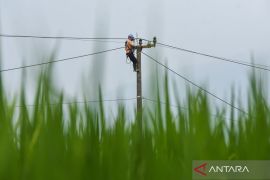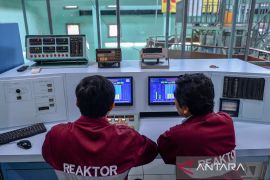The agreement requires countries to lower carbon emissions from all lines of economic development, from industry to transportation.
This commitment has been reaffirmed by Indonesia through the Enhanced-Nationally Determined Contribution (ENDC) document, in which it has pledged to cut carbon dioxide (CO2) emissions by 912 million tons by 2030 and achieve net zero emissions (NZE) by 2060.
To meet these goals, Indonesia is starting to replace fossil fuels with renewable energy, such as solar energy, wind energy, geothermal energy, hydropower, and biofuels.
As per records, Indonesia's electrification development potential from renewable energy is 3,687 gigawatts, comprising 2,898 GW from solar energy, 589 GW from wind energy, 94.6 GW from hydropower, 23.4 GW from geothermal energy, and 50 GW from biofuels.
Indonesia also has abundant mineral resource reserves, for instance, it has 72 million tons of nickel, accounting for 52 percent of the world's total nickel reserves.
In addition, with a total exploration potential of 1,200 million tons, Indonesia has the sixth-largest bauxite reserves in the world.
It also has coal reserves of 134.24 billion tons that are sufficient to meet domestic needs for up to 500 years, with the assumption of 250 million tons of usage per year.
The abundant mineral reserves make a significant contribution to the Indonesian economy.
In 2023, the mineral and coal sector accounted for Rp2,198 trillion (around USD137.94 billion) of the country's gross domestic product (GDP), or 10.5 percent of the total GDP of Rp20,892 trillion (around USD1.31 trillion).
However, the mineral and coal mining sector is also a significant contributor to carbon emissions, accounting for 4–7 percent of greenhouse gas emissions globally.
In view of this, Indonesia has devised a strategy to ensure that economic contribution from the mining sector remains high while it makes efforts to achieve the net zero vision by 2060.
Net zero efforts
Energy and Mineral Resources Minister Bahlil Lahadalia has emphasized that Indonesia will continue to strive for the reduction of greenhouse gas emissions and realization of net zero emissions, in keeping with the global agreement.
However, in pursuing the goal, Indonesia, as a fully sovereign country, is resorting to its own measures instead of using the baseline of developed countries.
As long as the technology for developing renewable energy is still expensive and the Indonesian economy is not yet robust, the government will continue to adjust it to domestic conditions and prioritize existing potential for the sake of public welfare.
This is because the energy transition process involves large costs, with electrification development for solar energy, geothermal energy, wind energy, biofuels, and hydropower requiring USD1 trillion in investment.
Thus, Indonesia's energy transition strategy is prescribing a gradual shift from fossils to greener fuels.
The government has set the gradual transition strategy through the Electricity Supply Business Plan (RUPTL).
Under the plan, the national energy mix for electricity is targeted to comprise 48 percent fossil energy and 52 percent renewable energy by 2030.
In the RUPTL, the government has stipulated average electricity growth of 4.9 percent per year and the addition of 40.6 gigawatts of power generation capacity, 47,723 circuit kilometers of transmission networks, and around 76,662 megavolt-ampere (MVA) substation transformers.
Furthermore, it includes the addition of 456,547 circuit kilometers of distribution networks and around 31,095 MVA substation transformers.
To increase the electricity mix of renewable energy, the RUPTL emphasizes the importance of innovation by mixing coal with biomass or municipal waste (co-firing).
This has been tested at coal-fired power plants of the circulated fluidized bed (CFB), pulverized coal (PC), and stocker type as one of the steps to increase the share of renewable energy in the national energy mix.
This also includes using the results of liquefied coal and gasified coal technology for the utilization of low-calorie coal, which is quite abundant in Indonesia, and theoretically, very difficult to use as a fuel in coal-fired power plants.
The pilot project of the program is being carried out by state-run electricity company PLN in collaboration with a developer in Karawang, West Java.
Going forward, the use of minerals such as nickel, bauxite, tin, and coal will be focused on providing economic value added through the downstreaming policy.
For example, under the strategy set by the government, coal will be focused on downstreaming to produce methanol and dimethyl ether (DME) products, which are intended to meet the needs of liquefied petroleum gas for the community.
As for nickel, it is being developed to produce electric vehicle (EV) battery cell products, which can make a significant contribution to Indonesia's exports, while, at the same time, help slash carbon emissions in the transportation sector.
Through these measures, Indonesia is hoping to gradually reduce fossil energy as the main contributor to the national energy supply, without sacrificing the contribution of the mineral and coal sectors to the economy.
With abundant natural resources and a planned energy transition strategy, Indonesia is at a crucial juncture in determining its future.
Efforts to realize NZE by 2060 are not only a global responsibility but also an opportunity to develop a more sustainable and inclusive economy.
However, this journey requires strong commitment, technological innovation, and bravery to adapt to domestic and global challenges.
By utilizing renewable energy potential, prioritizing mineral downstreaming, and maintaining a balance between economic development and environmental sustainability, Indonesia can emerge as an effective energy transition model among developing countries.
In the end, Indonesia's success in reducing carbon emissions while maintaining economic growth will reflect the nation's vision: moving forward with local strength, thinking globally, and preserving the Earth's resources for future generations.
Related news: Indonesia can help the world achieve net-zero emissions: Minister
Related news: Indonesia's Pertamina partners with international firms for CCS study
Editor: Rahmad Nasution
Copyright © ANTARA 2024
